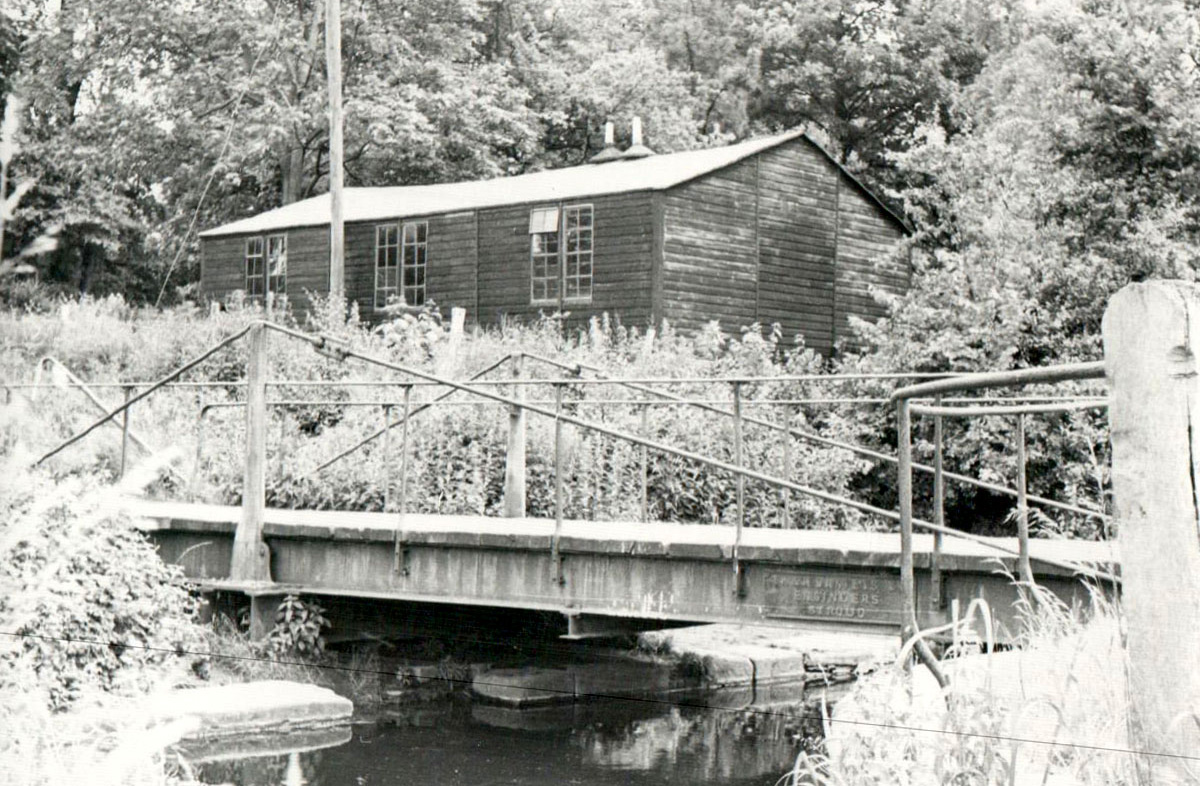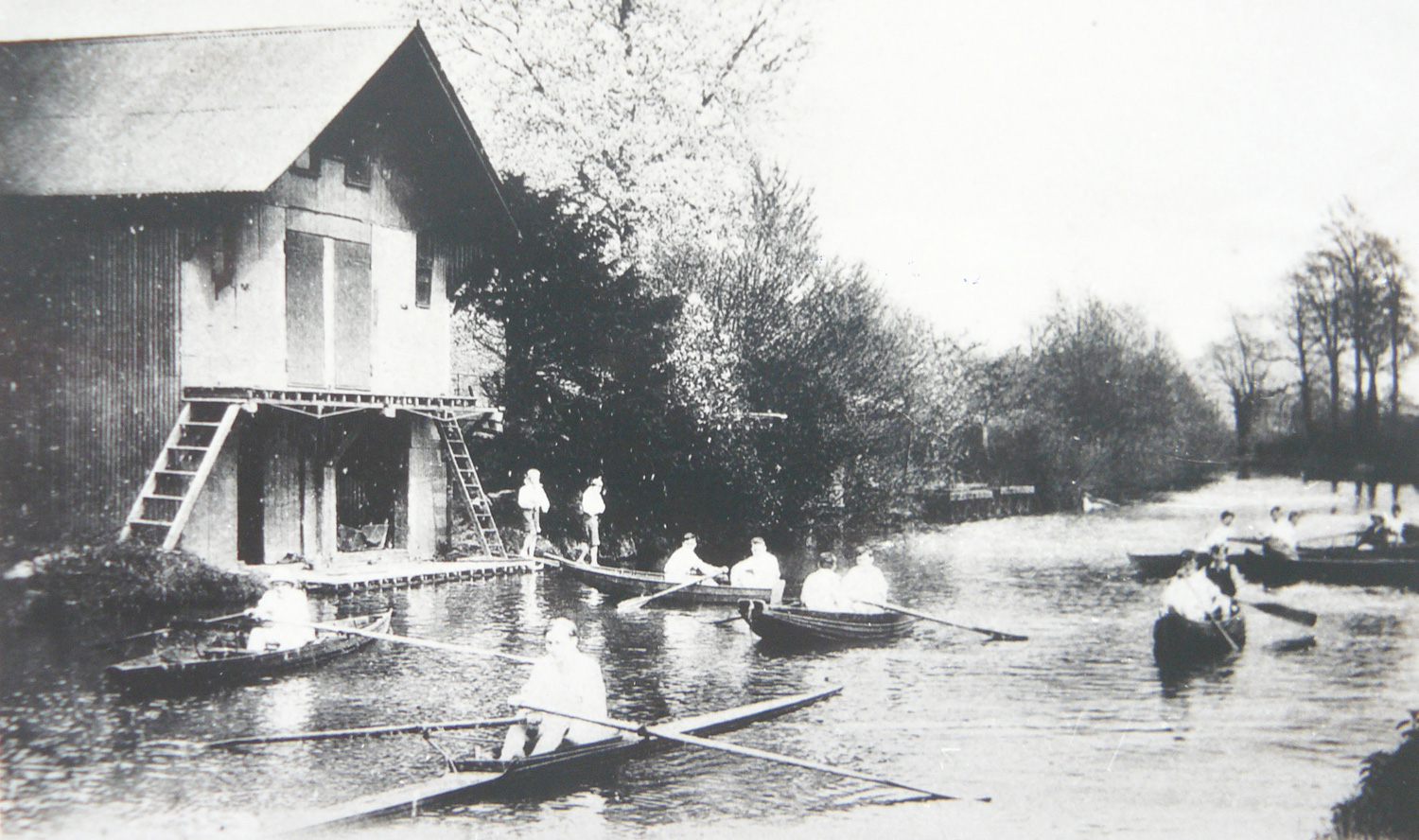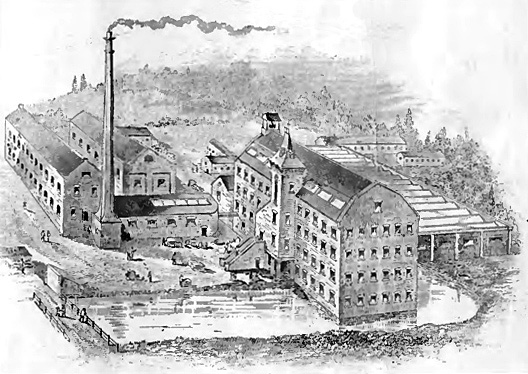The present bridge is a recent replacement and the former Wycliffe College boathouse is nearby. (For sources, see bottom of page.)


The original swing bridge carried a private track to Stonehouse Upper Mills which once produced fine woollen cloth but is now part of a trading estate. The location is referred to in early traffic records by the name of the owner of the mill at the time.
In 2010, to restore navigation on the canal without interfering with traffic to the trading estate, the canal was diverted a few yards to the north. This allowed a fixed bridge to be built on slightly higher ground, giving adequate headroom for vessels with a reasonable gradient for the road.


To the east of the bridge, the original boathouse established in 1889 was replaced in the early twentieth century by the building illustrated, which has an upper floor changing room. From here, boys could experience sculling, rowing, canoeing and swimming. In 1911, boys also tried out boats they had built themselves at school.
In the 1930s, most boating activities moved to a new base at Saul Junction, and the boathouse then became mainly a centre for swimming and diving. The boathouse has survived but in rather poor condition.


The road over Upper Mills Bridge runs past former industrial buildings that were used for making a wide range of fine woollen cloths. Originally a small mill powered by the River Frome, the introduction of steam power in the nineteenth century allowed the mill to expand, and coal was delivered by canal.
After cloth production ceased in 1904, the site became a brush factory and is now a trading estate. The main mill building shown in the picture has survived.
For origin of the boathouse , see D1180/1/7 p48 and 'Wycliffe College' by S G H Loosely.
For boats built by the boys, see D1180/9/12 p145.
For attempted sale of Stonehouse Upper Mills, see Gloucester Journal 24 Sep 1904 p8.